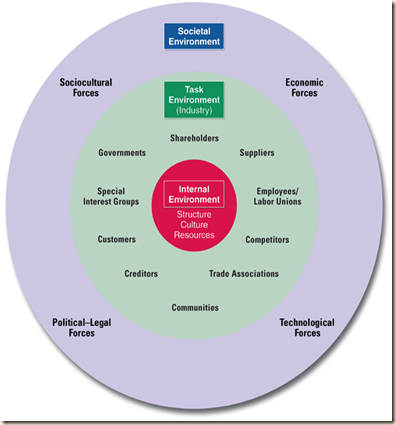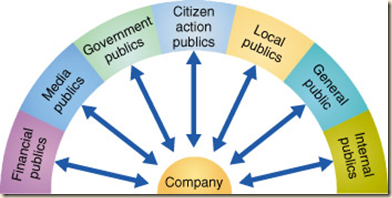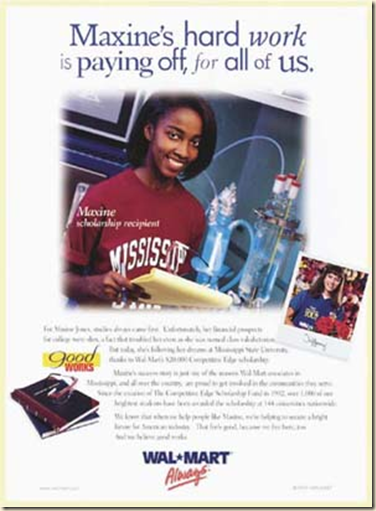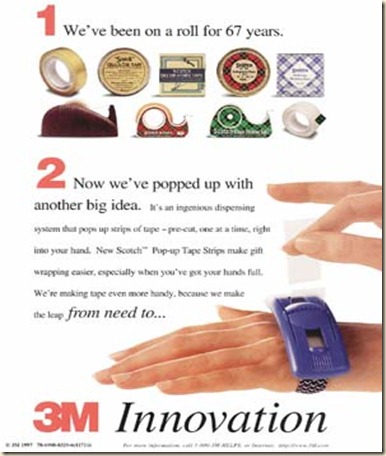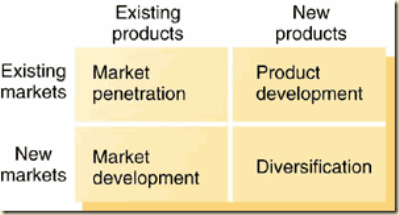In order to be able to set a marketing strategy and a marketing plan, Marketers need information to:
- Asses the Opportunities and Threats
- Know the strengths and weaknesses
- Identify the habits and the behavior of the markets
Marketers get these information through:
1.Environmental scanning
2.Marketing information systems
In this chapter we will discuss the 1st way only (environmental scanning) , then the other way ( Marketing information system will be discussed later as a part of Marketing Research class)
============
What is Marketing environment????
Simply, it’s The actors and forces outside marketing that affect marketing management’s ability to build and maintain successful relationships with target customers
Any company’s Marketing environment is composed of 3 components:
- Marketing Micro internal environment
- Marketing Micro external environment
- Marketing Macro external environment
Therefore, we ca classify those 3 components into 2 categories , either to be:
- Micro & Macro environment, or
- Internal & External environment
But according to most text books ways of classification , we will depend on being Micro environment (where we have 2 other environments ,Internal & external ) and Macro environment (where we have ONLY one environment External environment)
==========================================
1 - The Company's Microenvironment
Marketing management's job is to attract and build relationships with customers by creating customer value and satisfaction. However, marketing managers cannot accomplish this task alone. Their success will depend on other actors in the company's microenvironment:
1- internally, like other company departments,or
2- externally, like suppliers, marketing intermediaries, customers, competitors, and various publics
1.1 Micro-internal environment : The Company
In designing marketing plans, marketing management takes other company groups into account—groups such as top management, finance, research and development (R&D), purchasing, manufacturing, and accounting. All these interrelated groups form the internal environment 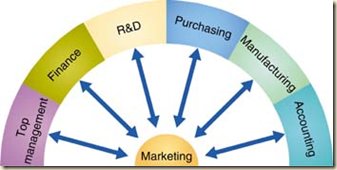 Top management sets the company's mission, objectives, broad strategies, and policies. Marketing managers make decisions within the plans made by top management, and marketing plans must be approved by top management before they can be implemented.
Top management sets the company's mission, objectives, broad strategies, and policies. Marketing managers make decisions within the plans made by top management, and marketing plans must be approved by top management before they can be implemented.
Marketing managers must also work closely with other company departments. Finance is concerned with finding and using funds to carry out the marketing plan. The R&D department focuses on designing safe and attractive products. Purchasing worries about getting supplies and materials, whereas manufacturing is responsible for producing the desired quality and quantity of products. Accounting has to measure revenues and costs to help marketing know how well it is achieving its objectives. Together, all of these departments have an impact on the marketing department's plans and actions. Under the marketing concept, all of these functions must "think consumer," and they should work in harmony to provide superior customer value and satisfaction.
1.2 Micro-external environment :
1.2.1 Suppliers
Suppliers are an important link in the company's overall customer value delivery system. They provide the resources needed by the company to produce its goods and services. Supplier problems can seriously affect marketing.
Marketing managers must watch supply availability—supply shortages or delays, labor strikes, and other events can cost sales in the short run and damage customer satisfaction in the long run. Marketing managers also monitor the price trends of their key inputs. Rising supply costs may force price increases that can harm the company's sales volume.
1.2.2 Marketing Intermediaries
Marketing intermediaries help the company to promote, sell, and distribute its goods to final buyers.
They include resellers, physical distribution firms, marketing services agencies, and financial intermediaries.
- Resellers are distribution channel firms that help the company find customers or make sales to them, including wholesalers and retailers, who buy and resell merchandise. Selecting and working with resellers is not easy because they may have enough power to dictate terms or even shut the manufacturer out of markets.
- Physical distribution firms help the company to stock and move goods from their points of origin to their destinations. Working with warehouse and transportation firms, a company must determine the best ways to store and ship goods, balancing factors such as cost, delivery, speed, and safety.
- Marketing services agencies are the marketing research firms, advertising agencies, media firms, and marketing consulting firms that help the company target and promote its products to the right markets. When the company decides to use one of these agencies, it must choose carefully because these firms vary in creativity, quality, service, and price.
- Financial intermediaries include banks, credit companies, insurance companies, and other businesses that help finance transactions or insure against the risks associated with the buying and selling of goods. Most firms and customers depend on financial intermediaries to finance their transactions.
Like suppliers, marketing intermediaries form an important component of the company's overall value delivery system. In its quest to create satisfying customer relationships, the company must do more than just optimize its own performance. It must partner effectively with marketing intermediaries to optimize the performance of the entire system.
Thus, today's marketers recognize the importance of working with their intermediaries as partners rather than simply as channels through which they sell their products.
For example, Coca-Cola recently signed a 10-year deal with Wendy's that will make Coke the exclusive soft drink provider to the fast-food chain, picking up more than 700 Wendy's franchises that were previously served by Pepsi. In the deal, Coca-Cola promised Wendy's much more than just its soft drinks. It pledged the powerful marketing support that comes along with an exclusive partnership with Coke.
1.2.3 Customers
The company needs to study its customer markets closely.
Basically, There are five types of customer markets.
1- Consumer markets consist of individuals and households that buy goods and services for personal consumption.
2- Business markets buy goods and services for further processing or for use in their production process
3- reseller markets buy goods and services to resell at a profit.
4- Government markets are made up of government agencies that buy goods and services to produce public services or transfer the goods and services to others who need them.
5-Finally, international markets consist of these buyers in other countries, including consumers, producers, resellers, and governments. Each market type has special characteristics that call for careful study by the seller.
1.2.4 Competitors
The marketing concept states that to be successful, a company must provide greater customer value and satisfaction than its competitors do. Thus, marketers must do more than simply adapt to the needs of target consumers. They also must gain strategic advantage by positioning their offerings strongly against competitors' offerings in the minds of consumers.
1.2.5 Publics
The company's marketing environment also includes various publics. A public is any group that has an actual or potential interest in or impact on an organization's ability to achieve its objectives.
- Financial publics: influence the company's ability to obtain funds, like Banks, investment houses, and stockholders
- Media publics: carry news, features, and editorial opinion. They include newspapers, magazines, and radio and television.
- Government publics: Management must take government developments into account. Marketers must often consult the company's lawyers on issues of product safety, truth in advertising, and other matters.
- Citizen action publics: A company's marketing decisions may be questioned by consumer organizations, environmental groups, minority groups, and others.
- Local publics: include neighborhood residents and community organizations. Large companies usually appoint a community relations officer to deal with the community, attend meetings, answer questions, and contribute to worthwhile causes.
- General public: A company needs to be concerned about the general public's attitude toward its products and activities. The public's image of the company affects its buying.
- Internal publics: include workers, managers, volunteers, and the board of directors. Large companies use newsletters and other means to inform and motivate their internal publics. When employees feel good about their company, this positive attitude spills over to external publics.
A company can prepare marketing plans for these major publics as well as for its customer markets. Suppose the company wants a specific response from a particular public, such as goodwill, favorable word of mouth, or donations of time or money. The company would have to design an offer to this public that is attractive enough to produce the desired response.
Publics: In this ad, Wal-Mart recognizes the importance of both its local and employee publics. Its Competitive Edge scholarship program "is just one of the reasons Wal-Mart associates (such as Maxine) in Mississippi, and all over the country, are proud to get involved in the communities they serve."
========================
2- The Company's Macroenvironment
The company and all of the other actors operate in a larger macroenvironment of forces that shape opportunities and pose threats to the company and every other company working at the same field , This environment is what we call (PEST analysis )
PEST stands for :
1- Political,
2- Economic,
3- Sociocultural
4- Technological environments
Some analysts added Legal and rearranged it to be SLEPT or inserting Ecological factors expanded it to PESTEL or PESTLE, which is popular in the UK.
The model has recently been further extended to STEEPLE and STEEPLED, adding education and demographic factors. or to add Regulatory factors to be STEER Analysis.
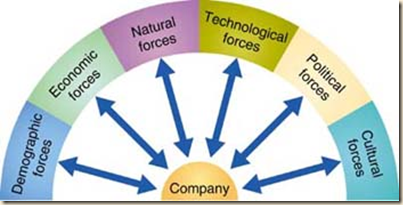
1- Political Environment
Marketing decisions are strongly affected by developments in the political environment. The political environment consists of laws, government agencies, and pressure groups that influence and limit various organizations and individuals in a given society.
2- Economic Environment
Markets require buying power as well as people. The economic environment consists of factors that affect consumer purchasing power and spending patterns. Nations vary greatly in their levels and distribution of income. Marketers must pay close attention to major trends and consumer spending patterns both across and within their world markets, examples for effects of economic environment on marketing:
Changes in Income
- During the 1980s—tabbed the "roaring eighties" by some—American consumers fell into a consumption frenzy, fueled by income growth, federal tax reductions, rapid increases in housing values, and a boom in borrowing. They bought and bought, seemingly without caution, amassing record levels of debt. "It was fashionable to describe yourself as 'born to shop.' When the going gets tough, it was said, the tough go shopping."
- During the 1990s, the baby boom generation moved into its prime wage-earning years, and the number of small families headed by dual-career couples continued to increase. Thus, many consumers continued to demand quality products and better service, and they were able to pay for them. However, the free spending and high expectations of the 1980s were dashed by the recession in the early 1990s.
- As we move into the 2000s, despite several years of strong economic performance, consumers continue to spend carefully. Hence, the trend toward value marketing continues. Rather than offering high quality at a high price, or lesser quality at very low prices, marketers are looking for ways to offer today's more financially cautious buyers greater value—just the right combination of product quality and good service at a fair price.
- Marketers should pay attention to income distribution as well as average income. Income distribution in the United States is still very skewed. At the top are upper-class consumers, whose spending patterns are not affected by current economic events and who are a major market for luxury goods. There is a comfortable middle class that is somewhat careful about its spending but can still afford the good life some of the time. The working class must stick close to the basics of food, clothing, and shelter and must try hard to save. Finally, the underclass (persons on welfare and many retirees) must count their pennies when making even the most basic purchases.
- Over the past three decades, the rich have grown richer, the middle class has shrunk, and the poor have remained poor. In 1994, the top 5 percent of income-earning households in the United States captured over 21 percent of aggregate income, up from 16.6 percent in 1970. Meanwhile, the share of income captured by the bottom 20 percent of income-earning households decreased from 4.1 percent to 3.6 percent.
Changing Consumer Spending Patterns
- Consumers at different income levels have different spending patterns. Some of these differences were noted over a century ago by Ernst Engel, who studied how people shifted their spending as their income rose. He found that as family income rises, the percentage spent on food declines, the percentage spent on housing remains about constant (except for such utilities as gas, electricity, and public services, which decrease), and both the percentage spent on most other categories and that devoted to savings increase. Engel's laws generally have been supported by later studies.
- Changes in major economic variables such as income, cost of living, interest rates, and savings and borrowing patterns have a large impact on the marketplace. Companies watch these variables by using economic forecasting. Businesses do not have to be wiped out by an economic downturn or caught short in a boom. With adequate warning, they can take advantage of changes in the economic environment.
3- Socio Cultural Environment
The cultural environment is made up of institutions and other forces that affect a society's basic values, perceptions, preferences, and behaviors. People grow up in a particular society that shapes their basic beliefs and values. They absorb a world view that defines their relationships with others. The following cultural characteristics can affect marketing decision making.
People's Views of Themselves
People vary in their emphasis on serving themselves versus serving others. Some people seek personal pleasure, wanting fun, change, and escape. Others seek self-realization through religion, recreation, or the avid pursuit of careers or other life goals. People use products, brands, and services as a means of self-expression, and they buy products and services that match their views of themselves.
In the 1980s, personal ambition and materialism increased dramatically, with significant marketing implications. In a "me society," people buy their "dream cars" and take their "dream vacations." They tended to spend to the limit on self-indulgent goods and services. Today, in contrast, people are adopting more conservative behaviors and ambitions. They are more cautious in their spending patterns and more value driven in their purchases. Moving into the new millennium, materialism, flashy spending, and self-indulgence have been replaced by more sensible spending, saving, family concerns, and helping others. The aging baby boomers are limiting their spending to products and services that improve their lives instead of boosting their images. This suggests a bright future for products and services that serve basic needs and provide real value rather than those relying on glitz and hype.
People's Views of Others
Recently, observers have noted a shift from a me society to a "we society" in which more people want to be with and serve others. Notes one trend tracker, "People want to get out, especially those 48 million people working out of their home and feeling a little cooped-up [and] all those shut-ins who feel unfulfilled by the cyberstuff that was supposed to make them feel like never leaving home." This trend suggests a greater demand for "social support" products and services that improve direct communication between people, such as health clubs and family vacations.
People's Views of Organizations
People vary in their attitudes toward corporations, government agencies, trade unions, universities, and other organizations. By and large, people are willing to work for major organizations and expect them, in turn, to carry out society's work. The late 1980s saw a sharp decrease in confidence in and loyalty toward America's business and political organizations and institutions. In the workplace, there has been an overall decline in organizational loyalty. During the 1990s, waves of company downsizings bred cynicism and distrust. Many people today see work not as a source of satisfaction but as a required chore to earn money to enjoy their nonwork hours.
This trend suggests that organizations need to find new ways to win consumer and employee confidence. They need to review their advertising communications to make sure their messages are honest. Also, they need to review their various activities to make sure that they are being good corporate citizens. More companies are linking themselves to worthwhile causes, measuring their images with important publics, and using public relations to build more positive images.
People's Views of Society
People vary in their attitudes toward their society; patriots defend it, reformers want to change it, malcontents want to leave it. People's orientation to their society influences their consumption patterns, levels of savings, and attitudes toward the marketplace.
The past two decades have seen an increase in consumer patriotism. For example, one study showed that over 80 percent of those surveyed say, "Americans should always try to buy American"—up from 72 percent in 1972. Many U.S. companies have responded with "made in America" themes and flag-waving promotions. For example, Black & Decker added a flaglike symbol to its tools. For the past several years, the American textile industry has blitzed consumers with its "Crafted with Pride in the USA" advertising campaign, insisting that "made in the USA" matters. In 1991, many companies used patriotic appeals and promotions to express their support of American troops in the Gulf War and to ride the wave of national pride and patriotism that followed.
People's Views of Nature
People vary in their attitudes toward the natural world. Some feel ruled by it, others feel in harmony with it, and still others seek to master it. A long-term trend has been people's growing mastery over nature through technology and the belief that nature is bountiful. More recently, however, people have recognized that nature is finite and fragile, that it can be destroyed or spoiled by human activities.
Love of nature is leading to more camping, hiking, boating, fishing, and other outdoor activities. Business has responded by offering more products and services catering to these interests. Tour operators are offering more wilderness adventures, and retailers are offering more fitness gear and apparel. Food producers have found growing markets for "natural" products such as natural cereal, natural ice cream, and health foods. Marketing communicators are using appealing natural backgrounds in advertising their products.
People's Views of the Universe
Finally, people vary in their beliefs about the origin of the universe and their place in it. Although most Americans practice religion, religious conviction and practice have been dropping off gradually through the years. Some futurists, however, have noted a renewed interest in spirituality, perhaps as a part of a broader search for a new inner purpose. People have been moving away from materialism and dog-eat-dog ambition to seek more permanent values—family, community, earth, faith—and a more certain grasp of right and wrong.
"Americans are on a spiritual journey," observes one expert, "increasingly concerned with the meaning of life and issues of the soul and spirit. The journey can encompass religion, but it is much more likely to take the form of . . . 'spiritual individualism.' " This new spiritualism affects consumers in everything from the television shows they watch and the books they read to the products and services they buy. "Since consumers don't park their beliefs and values on the bench outside the marketplace," adds the expert, "they are bringing this awareness to the brands they buy. Tapping into this heightened sensitivity presents a unique marketing opportunity for brands."
4- Demographic Environment
Demography is the study of human populations in terms of size, density, location, age, gender, race, occupation, and other statistics. The demographic environment is of major interest to marketers because it involves people, and people make up markets.
The world's large and highly diverse population poses both opportunities and challenges. Thus, marketers keep close track of demographic trends and developments in their markets, both at home and abroad. They track changing age and family structures, geographic population shifts, educational characteristics, and population diversity. Here, we discuss the most important demographic trends in the United States.

Figure 3.5
Age distribution of the U.S. population
Changing Age Structure of the Population
The U.S. population stood at more than 273 million in 1999 and may reach 300 million by the year 2020. The single most important demographic trend in the United States is the changing age structure of the population. As shown in Figure 3.5, the age distribution of the U.S. population is rapidly assuming an "hourglass" shape. Two very large age groups, the baby boomer generation and the baby boomlet generation, surround the smaller Generation Xers.
The Baby Boomers
The post-World War II baby boom produced 78 million baby boomers born between 1946 and 1964. Since then, the baby boomers have become one of the most powerful forces shaping the marketing environment. The boomers have presented a moving target, creating new markets as they grew from infancy to their preadolescent, teenage, young adult, and now middle-age to mature years. Today's baby boomers account for about 30 percent of the population but earn more than half of all personal income. Baby boomers cut across all walks of life. But marketers typically have paid the most attention to the smaller upper crust of the boomer generation—its more educated, mobile, and wealthy segments. These segments have gone by many names. In the 1980s, they were called "yuppies" (young urban professionals), "bumpies" (black upwardly mobile professionals) "yummies" (young upwardly mobile mommies), and "DINKs" (dual-income, no-kids couples). In the 1990s, however, yuppies and DINKs gave way to a new breed, with names such as "DEWKs" (dual earners with kids) and "MOBYs" (mother older, baby younger). Now, to the chagrin of many in this generation, they are acquiring such titles as "WOOFs" (well-off older folks) or even "GRUMPIES" (just what the name suggests).
The oldest boomers are now in their fifties; the youngest are in their mid-to-late thirties. Thus, the boomers have evolved from the "youthquake generation" to the "backache generation." They are also reaching their peak earning and spending years. Thus, they constitute a lucrative market for housing, furniture and appliances, healthful foods and beverages, physical fitness products, high-priced cars, convenience products, and travel and financial services. The maturing boomers are experiencing the pangs of midlife and rethinking the purpose and value of their work, responsibilities, and relationships. They are approaching life with a new stability and reasonableness in the way they live, think, eat, and spend. As they continue to age, they will create a large and important seniors market. By 2025, there will be 64 million baby boomers aged 61 to 79, a 90 percent increase in the size of this population from today.
Generation X
The baby boom was followed by a "birth dearth," creating another generation of 45 million people born between 1965 and 1976. Author Douglas Coupland calls them "Generation X," because they lie in the shadow of the boomers and lack obvious distinguishing characteristics. Others call them the "baby busters," "shadow generation," "twentysomethings," or "yiffies"—young, individualistic, freedom-minded few.
The GenXers are defined as much by their shared experiences as by their age. Increasing divorce rates and higher employment for their mothers made them the first generation of latchkey kids. Whereas the boomers created a sexual revolution, the GenXers have lived in the age of AIDS. Having grown up during times of recession and corporate downsizing, they have developed a more cautious economic outlook. As a result, the GenXers are a more skeptical bunch, cynical of frivolous marketing pitches that promise easy success. They buy lots of products, such as sweaters, boots, cosmetics, electronics, cars, fast food, beer, computers, and mountain bikes. However, their cynicism makes them more savvy shoppers, and their financial pressures make them more value conscious. They like lower prices and a more functional look. The GenXers respond to honesty in advertising, and they like irreverence and sass and ads that mock the traditional advertising approach. For example, recent Miller Brewing Company ads appealing to this group advised "It's time to embrace your inner idiot" and one features images of a frenetic, sloppy hot-dog-eating contest.
GenXers share new cultural concerns. They care about the environment and respond favorably to socially responsible companies. Although they seek success, they are less materialistic; they prize experience, not acquisition. They are cautious romantics who want a better quality of life and are more interested in job satisfaction than in sacrificing personal happiness and growth for promotion.
Generation Y
Born between 1977 and 1994, these children of the baby boomers now number 72 million, dwarfing the GenXers and almost equal in size to the baby boomer segment. Ranging from preteens to twenties, the echo boomer generation is still forming its buying preferences and behaviors.
Generation Y has created large and growing kid and teens markets. Teens and preteens under 20 years of age spend $130 billion on their own and influence upward of $500 billion of their parents' spending. After years of bust, markets for children's toys and games, clothes, furniture, and food are enjoying a boom. For instance, Sony and other electronics firms are now offering products designed especially for children. In recent years, designers and retailers have created new lines, new products, and even new stores devoted to children and teens—Tommy Hilfiger, DKNY, Gap, Toys "R" Us, Guess, Talbots, Pottery Barn, and Eddie Bauer, to name just a few. A number of new media have appeared that cater specifically to this market: Time, Sports Illustrated, and People have all started new editions for kids and teens. Banks offer banking and investment services for kids, including investment camps. Major advertising agencies have even opened new divisions—such as Saatchi & Saatchi Advertising's Kid Connection division and Grey Advertising's 18 & Under division—that specialize in helping their clients shape their appeals for young audiences. Like the trailing edge of the Generation Xers ahead of them, one distinguishing characteristic of the echo boomers is their utter fluency and comfort with computer, digital, and Internet technology. For this reason, one analyst has christened them the Net-Gens (or N-Gens). He observes:
What makes this generation different . . . is not just its demographic muscle, but it is the first to grow up surrounded by digital media. Computers and other digital technologies, such as digital cameras, are commonplace to N-Gen members. They work with them at home, in school, and they use them for entertainment. Increasingly these technologies are connected to the Internet. . . . Constantly surrounded by technology, today's kids are accustomed to its strong presence in their lives. [They] are so bathed in bits that they are no more intimidated by digital technology than a VCR or a toaster. And it is through their use of the digital media that N-Gen will develop and superimpose its culture on the rest of society. Boomers stand back. Already these kids are learning, playing, communicating, working, and creating communities very differently than did their parents. They are a force for social transformation.
Generational Marketing
Do marketers have to create separate products and marketing programs for each generation? Some experts caution that each generation spans decades of time and many socioeconomic levels. "These segments are so large they're meaningless as marketing targets," notes one such expert. "'Matures' range in age from 54 to 90; that isn't a target, it's a happening." Similarly, . . . "boomers span almost twenty years." He suggests that marketers should form more precise age-specific segments within each group.
Others warn that marketers have to be careful about turning off one generation each time they craft a product or message that appeals effectively to another. "The idea is to try to be broadly inclusive and at the same time offer each generation something specifically designed for it. Tommy Hilfiger has big brand logos on his clothes for teenagers and little pocket polo logos on his shirts for baby boomers. It's a brand that has a more inclusive than exclusive strategy."
The Changing American Family
The "traditional household" consists of a husband, wife, and children (and sometimes grandparents). Yet, the once American ideal of the two-child, two-car suburban family has lately been losing some of its luster. In fact, couples with children under 18 now make up only about 35 percent of all U.S. families. In the United States today, one in eight households is "diverse" or "nontraditional" and includes single live-alones, adult live-togethers of one or both sexes, single-parent families, childless married couples, or empty nesters. More people are divorcing or separating, choosing not to marry, marrying later, or marrying without the intention to have children. Marketers must increasingly consider the special needs of nontraditional households, because they are now growing more rapidly than traditional households. Each group has a distinctive set of needs and buying habits. For example, people in the SSWD group (single, separated, widowed, divorced) need smaller apartments; inexpensive and smaller appliances, furniture, and furnishings; and food packaged in smaller sizes.
The number of working women has also increased greatly. This trend has spawned the child day care business and increased consumption of convenience foods and services, career-oriented women's clothing, financial services, and many other business opportunities. Here are two examples:
More and more workplaces and child care centers are installing monitoring setups such as "I See You" equipment from Simplex Knowledge in White Plains, New York. This system allows parents to see their children at different points throughout the day. Via still photos taken by a camera in the child care center and posted on a secure Web site on the Internet, working parents who long to spend more time with their young ones get reassuring glimpses throughout the day.
Whereas shopping malls are in decline, there's been a boom in niche malls that cater to the needs of working women. Shops at Somerset Square in Glastonbury, Connecticut, is one such open-air shopping center. It features a customized retail mix of specialty shops, targeted promotions, and phone-in shopping in which shoppers phone ahead with sizes and color preferences while store employees perform a "wardrobing" service. Many of the stores also informally extend hours for working women who find time to shop only before or after work.
A Better-Educated and More White-Collar Population
The U.S. population is becoming better educated. For example, in 1996, 82 percent of the U.S. population over age 25 had completed high school and 24 percent had completed college, compared with 69 percent and 17 percent in 1980. The rising number of educated people will increase the demand for quality products, books, magazines, travel, personal computers, and Internet services. It suggests a decline in television viewing because college-educated consumers watch less TV than the population at large. The workforce also is becoming more white collar. Between 1950 and 1985, the proportion of white-collar workers rose from 41 percent to 54 percent, that of blue-collar workers declined from 47 percent to 33 percent, and that of service workers increased from 12 percent to 14 percent. These trends have continued into the new millennium.
Increasing Diversity
Countries vary in their ethnic and racial makeup. At one extreme is Japan, where almost everyone is Japanese. At the other extreme is the United States, with people from virtually all nations. The United States has often been called a melting pot in which diverse groups from many nations and cultures have melted into a single, more homogenous whole. Instead, the United States seems to have become more of a "salad bowl" in which various groups have mixed together but have maintained their diversity by retaining and valuing important ethnic and cultural differences.
Marketers are facing increasingly diverse markets, both at home and abroad as their operations become more international in scope. In the United States alone, ethnic population growth is six times greater than the Caucasian growth rate, and ethnic consumers buy more than $600 billion of goods and services each year. The U.S. population is 72 percent white, with African Americans making up another 13 percent. The Hispanic population has grown rapidly and now stands at about 11 percent of the U.S. population. The U.S. Asian population also has grown rapidly in recent years and now totals about 3 percent of the population. The remaining 1 percent of the population is made up of Native Americans, Eskimos, and Aleuts. During the next half century, the proportions of both Hispanics and Asians will more than double. Moreover, there are nearly 25 million people living in the United States—over 9 percent of the population—who were born in another country.
Many large companies, ranging from large retailers such as Sears and Wal-Mart to consumer products companies such as Levi-Strauss and Procter & Gamble, now target specially designed products and promotions to one or more of these groups. Miller beer, for example, created television ads for the Hispanic market shown exclusively on Spanish-speaking channels. Even within the Hispanic market, however, different consumers have diverse interests and beliefs depending on country of origin, length of time in the United States, geographic placement, and other factors. Thus, although Miller employs the same visual elements across the country, it alters background music and voice-overs to reflect differences between, for example, Cubans in New York City and Mexican Americans in Los Angeles.
Diversity goes beyond ethnic heritage. For example, there are more than 52 million disabled people in the United States—a market larger than African Americans or Hispanics—representing almost $800 million in annual spending power. People with mobility challenges are an ideal target market for companies such as Peapod, which teams up with large supermarket chains in many heavily populated areas to offer online grocery shopping and home delivery. They also represent a growing market for travel, sports, and other leisure-oriented products and services.
5- Technological Environment
The technological environment is perhaps the most dramatic force now shaping our destiny. Technology has released such wonders as antibiotics, organ transplants, notebook computers, and the Internet. It also has released such horrors as nuclear missiles, chemical weapons, and assault rifles. It has released such mixed blessings as the automobile, television, and credit cards. Our attitude toward technology depends on whether we are more impressed with its wonders or its blunders.
The technological environment changes rapidly. Think of all of today's common products that were not available 100 years ago, or even 30 years ago. Abraham Lincoln did not know about automobiles, airplanes, radios, or the electric light. Woodrow Wilson did not know about television, aerosol cans, automatic dishwashers, room air conditioners, antibiotics, or computers. Franklin Delano Roosevelt did not know about xerography, synthetic detergents, tape recorders, birth control pills, or earth satellites. John F. Kennedy did not know about personal computers, compact disk players, VCRs, or the World Wide Web.
New technologies create new markets and opportunities. However, every new technology replaces an older technology. Transistors hurt the vacuum-tube industry, xerography hurt the carbon-paper business, the auto hurt the railroads, and compact disks hurt phonograph records. When old industries fought or ignored new technologies, their businesses declined. Thus, marketers should watch the technological environment closely. Companies that do not keep up with technological change soon will find their products outdated. They will miss new product and market opportunities.
6-Ecological Environment/Natural Environment
The natural environment involves the natural resources that are needed as inputs by marketers or that are affected by marketing activities. Environmental concerns have grown steadily during the past three decades. Some trend analysts labeled the 1990s as the "Earth Decade," claiming that the natural environment is the major worldwide issue facing business and the public. The Earth Day movement turned 30 in the year 2000. In many cities around the world, air and water pollution have reached dangerous levels. World concern continues to mount about the depletion of the earth's ozone layer and the resulting "greenhouse effect," a dangerous warming of the Earth. And many environmentalists fear that we soon will be buried in our own trash.
Marketers should be aware of several trends in the natural environment. The first involves growing shortages of raw materials. Air and water may seem to be infinite resources, but some groups see long-run dangers. Air pollution chokes many of the world's large cities and water shortages are already a big problem in some parts of the United States and the world. Renewable resources, such as forests and food, also have to be used wisely. Nonrenewable resources, such as oil, coal, and various minerals, pose a serious problem. Firms making products that require these scarce resources face large cost increases, even if the materials do remain available.
A second environmental trend is increased pollution. Industry will almost always damage the quality of the natural environment. Consider the disposal of chemical and nuclear wastes; the dangerous mercury levels in the ocean; the quantity of chemical pollutants in the soil and food supply; and the littering of the environment with nonbiodegradable bottles, plastics, and other packaging materials.
A third trend is increased government intervention in natural resource management. The governments of different countries vary in their concern and efforts to promote a clean environment. Some, like the German government, vigorously pursue environmental quality. Others, especially many poorer nations, do little about pollution, largely because they lack the needed funds or political will. Even the richer nations lack the vast funds and political accord needed to mount a worldwide environmental effort. The general hope is that companies around the world will accept more social responsibility, and that less expensive devices can be found to control and reduce pollution.
In the United States, the Environmental Protection Agency (EPA) was created in 1970 to set and enforce pollution standards and to conduct pollution research. In the future, companies doing business in the United States can expect strong controls from government and pressure groups. Instead of opposing regulation, marketers should help develop solutions to the material and energy problems facing the world.
Concern for the natural environment has spawned the so-called green movement. Today, enlightened companies go beyond what government regulations dictate. They are developing environmentally sustainable strategies and practices in an effort to create a world economy that the planet can support indefinitely. They are responding to consumer demands with ecologically safer products, recyclable or biodegradable packaging, better pollution controls, and more energy-efficient operations. 3M runs a Pollution Prevention Pays program that has led to a substantial reduction in pollution and costs. AT&T uses a special software package to choose the least harmful materials, cut hazardous waste, reduce energy use, and improve product recycling in its operations. McDonald's eliminated polystyrene cartons and now uses smaller, recyclable paper wrappings and napkins. IBM's AS/400e series of midrange business computers is more energy efficient, contains recycled content, and is designed to be disassembled for recycling. Dixon-Ticonderoga, the folks who developed the first pencil made in the United States, developed Prang crayons made from soybeans rather than paraffin wax, a by-product of oil drilling. Soybeans are a renewable resource and produce brighter, richer colors and a smoother texture. More and more, companies are recognizing the link between a healthy economy and a healthy ecology.
7- Legislation Regulating Business
Even the most liberal advocates of free-market economies agree that the system works best with at least some regulation. Well-conceived regulation can encourage competition and ensure fair markets for goods and services. Thus, governments develop public policy to guide commerce—sets of laws and regulations that limit business for the good of society as a whole. Almost every marketing activity is subject to a wide range of laws and regulations
Responding To The Marketing Environment
Someone once observed, "There are three kinds of companies: those who make things happen; those who watch things happen; and those who wonder what's happened." Many companies view the marketing environment as an uncontrollable element to which they must adapt. They passively accept the marketing environment and do not try to change it. They analyze the environmental forces and design strategies that will help the company avoid the threats and take advantage of the opportunities the environment provides.
Other companies take an environmental management perspective. Rather than simply watching and reacting, these firms take aggressive actions to affect the publics and forces in their marketing environment. Such companies hire lobbyists to influence legislation affecting their industries and stage media events to gain favorable press coverage. They run advertorials (ads expressing editorial points of view) to shape public opinion. They press lawsuits and file complaints with regulators to keep competitors in line, and they form contractual agreements to better control their distribution channels.
Often, companies can find positive ways to overcome seemingly uncontrollable environmental constraints. For example:
Cathay Pacific Airlines . . . determined that many travelers were avoiding Hong Kong because of lengthy delays at immigration. Rather than assuming that this was a problem they could not solve, Cathay's senior staff asked the Hong Kong government how to avoid these immigration delays. After lengthy discussions, the airline agreed to make an annual grant-in-aid to the government to hire more immigration inspectors—but these reinforcements would service primarily the Cathay Pacific gates. The reduced waiting period increased customer value and thus strengthened [Cathay's competitive advantage].
Marketing management cannot always control environmental forces. In many cases, it must settle for simply watching and reacting to the environment. For example, a company would have little success trying to influence geographic population shifts, the economic environment, or major cultural values. But whenever possible, smart marketing managers will take a proactive rather than reactive approach to the marketing environment.

